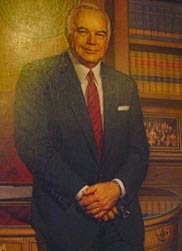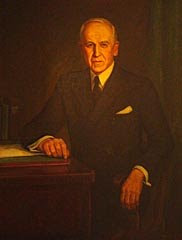On Statehood Day, Monday, January 4, 2010, the Capitol Preservation Board will begin the process of installing a newly developed free exhibit of documents, memorabilia, educator materials, artifacts and program called Utah in the Union: The Story of the 45th State, celebrating Utah’s 1896 entry into the Union.
The building-wide exhibition will be open from March 2010 through January 2011.The exhibit is specifically designed for Utah students and visitors to the state and those particularly curious about Utah’s history.
 By March 3, 2010 – the day Utah Territorial Delegate of Congress Joseph Rawlins introduced the Enabling Act to the House of Representatives in Washington D.C., pushing Utah into statehood – all historical objects, educational display cases and vintage photographs related to Statehood will be in place throughout all areas of the Utah State Capitol.
By March 3, 2010 – the day Utah Territorial Delegate of Congress Joseph Rawlins introduced the Enabling Act to the House of Representatives in Washington D.C., pushing Utah into statehood – all historical objects, educational display cases and vintage photographs related to Statehood will be in place throughout all areas of the Utah State Capitol.Exhibits feature several major pieces relevant to Utah history. Objects of interest include an original 45 Star flag to be placed in the Freedom Shrine on the first floor of the Capitol, as well as one of the original copies of the Proceedings Utah Constitutional Convention, published in 1896. In addition, there will be a new 7.5 x 6 topographical map of Utah taken from space, more than 30 historic photographs of Statehood celebrations, and an interactive timeline illustrating Utah’s seven attempts to join the Union.
Capitol Curator Judith McConkie, PhD, stated, “We are indebted to scholars and collectors who have gone before,” she said. “The Utah State Capitol seems, however, a fitting place for assembling a free and educational exhibit throughout the Capitol, especially for school children studying the history of Utah and visitors to our state.”
The Capitol Preservation Board would like to give a special thanks to those who have helped contribute to this exciting and worthy exhibition: The Daughters of the Utah Pioneers, The Church of Jesus Christ of Latter-day Saints Church History Library, KUED, Utah State Historical Society and Archives, various state newspaper organizations and universities who have all contributed generously to the exhibition, helping to celebrate the 45th state.

 Because the image is hard to read, the contents are as follows:
Because the image is hard to read, the contents are as follows: HOW TO DISPLAY THE FLAG
HOW TO DISPLAY THE FLAG


 HOW TO DISPLAY THE FLAG
HOW TO DISPLAY THE FLAG
 HOW TO DISPLAY THE FLAG
HOW TO DISPLAY THE FLAG FLAG ETIQUETTE
FLAG ETIQUETTE




 The FREE U.S.S. Utah exhibit will be coming to an end in December. This exhibit, located on the fourth floor of the Utah State Capitol building, celebrates the history and significance of one of the most famous battleships at Pearl Harbor. With beautiful display cases containing newspapers, clothing, battleship artifacts, and miniature replicas, as well as walls covered with historical photographs of the ship and its people, there is something for everyone. Make sure you make it up to the Capitol to see this historically powered exhibit before it closes!
The FREE U.S.S. Utah exhibit will be coming to an end in December. This exhibit, located on the fourth floor of the Utah State Capitol building, celebrates the history and significance of one of the most famous battleships at Pearl Harbor. With beautiful display cases containing newspapers, clothing, battleship artifacts, and miniature replicas, as well as walls covered with historical photographs of the ship and its people, there is something for everyone. Make sure you make it up to the Capitol to see this historically powered exhibit before it closes!

















 Olene Smith Walker was born in Ogden, Utah. She received her bachelor’s, master’s and doctorate degrees from Brigham Young University, Stanford University, and University of Utah, respectively. From 1969 to 1992, Walker served as vice president of Country Crisp Foods, a family business.
Olene Smith Walker was born in Ogden, Utah. She received her bachelor’s, master’s and doctorate degrees from Brigham Young University, Stanford University, and University of Utah, respectively. From 1969 to 1992, Walker served as vice president of Country Crisp Foods, a family business. Michael Okerlund Leavitt was born in Cedar City, Utah in 1951. He graduated from Southern Utah University with a degree in business and economics. Leavitt joined the Leavitt Group, a regional insurance organization founded by his father, and later became president and chief executive officer of the company. Leavitt also served as a member of the Utah State Board of Regents.
Michael Okerlund Leavitt was born in Cedar City, Utah in 1951. He graduated from Southern Utah University with a degree in business and economics. Leavitt joined the Leavitt Group, a regional insurance organization founded by his father, and later became president and chief executive officer of the company. Leavitt also served as a member of the Utah State Board of Regents. Norman Howard Bangerter was born in 1933 in rural Salt Lake County. For 50 years, with the exception of his college and army days, he lived less than ten blocks from the farmhouse where he was born. He attended the University of Utah and Brigham Young University before serving in the U.S. Army in Korea from 1953–54.
Norman Howard Bangerter was born in 1933 in rural Salt Lake County. For 50 years, with the exception of his college and army days, he lived less than ten blocks from the farmhouse where he was born. He attended the University of Utah and Brigham Young University before serving in the U.S. Army in Korea from 1953–54. Scott Milne Matheson was born in Chicago, Illinois in 1929. During the early 1930s, his family moved to Parowan, Utah and then later moved to Salt Lake City. He attended East High School and then University of Utah before graduating from Stanford University Law School in 1952. Matheson practiced law in Cedar City for several years and then moved to Salt Lake City to work as the deputy attorney for Salt Lake County. He then worked for the legal department of the Union Pacific Railroad.
Scott Milne Matheson was born in Chicago, Illinois in 1929. During the early 1930s, his family moved to Parowan, Utah and then later moved to Salt Lake City. He attended East High School and then University of Utah before graduating from Stanford University Law School in 1952. Matheson practiced law in Cedar City for several years and then moved to Salt Lake City to work as the deputy attorney for Salt Lake County. He then worked for the legal department of the Union Pacific Railroad. Born in 1913, Calvin Lewellyn Rampton was Utah’s third governor elected from Davis County. He attended the University of Utah and served in the Utah National Guard during World War II in Europe where he received a Bronze Star. Rampton’s early career was spent as the Davis County Attorney and the assistant attorney general for Utah. A lifelong Democrat, Rampton ran unsuccessfully for the United States Senate in 1954 and 1962. Although discouraged by these losses, he accepted his party’s nomination for governor and won that office in 1964.
Born in 1913, Calvin Lewellyn Rampton was Utah’s third governor elected from Davis County. He attended the University of Utah and served in the Utah National Guard during World War II in Europe where he received a Bronze Star. Rampton’s early career was spent as the Davis County Attorney and the assistant attorney general for Utah. A lifelong Democrat, Rampton ran unsuccessfully for the United States Senate in 1954 and 1962. Although discouraged by these losses, he accepted his party’s nomination for governor and won that office in 1964. George Dewey Clyde was born in 1898 in Springville, Utah. He earned a master’s degree in civil engineering and taught classes at Utah State Agricultural College (now Utah State University), that focused on hydraulic and fluid mechanics and irrigation methods. He was a successful researcher and published nearly 50 articles in engineering journals. Governor Blood appointed Clyde as the State Water Conservator in 1934, at the height of Utah’s worst drought.
George Dewey Clyde was born in 1898 in Springville, Utah. He earned a master’s degree in civil engineering and taught classes at Utah State Agricultural College (now Utah State University), that focused on hydraulic and fluid mechanics and irrigation methods. He was a successful researcher and published nearly 50 articles in engineering journals. Governor Blood appointed Clyde as the State Water Conservator in 1934, at the height of Utah’s worst drought.



 Charles Rendell Mabey was born in Bountiful, Utah in 1877. He attended the University of Utah and worked for ten years as a teacher and administrator. Mabey served in the Utah National Guard during the Spanish-American War and received a citation for gallantry.
Charles Rendell Mabey was born in Bountiful, Utah in 1877. He attended the University of Utah and worked for ten years as a teacher and administrator. Mabey served in the Utah National Guard during the Spanish-American War and received a citation for gallantry.

